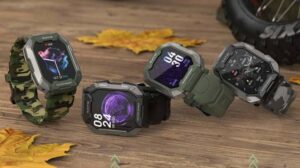Are you a music lover looking for a portable and powerful speaker to accompany you on the go? The JBL Clip series is an excellent choice! But with the release of the newest model, the JBL Clip 4, you may wonder what sets it apart from its predecessor, the JBL Clip 3.
JBL is well-known for producing high-quality portable speakers that pack a punch, and the Clip series is no exception. JBL has improved the previous model with each iteration, offering better features and sound quality.
The Clip 3 was highly popular among music enthusiasts, making the release of the Clip 4 highly anticipated.
In this article, we’ll compare the JBL Clip 4 and Clip 3 to help you decide which one to choose. We’ll delve into the four key differences between these two models, from size and battery life to sound quality and waterproofing.
So, if you’re in the market for a portable speaker and need help deciding between these two portable JBL speakers, keep reading to find out everything you need to know before making your purchase.
Key Differences Between the Two Models that Could Impact Your Decision
1. Design and Durability
One of the most noticeable differences between Clip 4 and Clip 3 is their design. The Clip 4 has a more modern, cylindrical shape that is slightly larger than the Clip 3’s classic rectangular design. The Clip 4 also features a redesigned carabiner clip that is more durable and easier to use than the Clip 3’s.
In terms of durability, both speakers are rated IPX7, meaning they are waterproof and can be submerged in water for up to 30 minutes. However, the Clip 4 has an added layer of protection with its new rubberized casing, which makes it even more resistant to drops and impacts.
2. Sound Quality
When it comes to sound quality, both Clip 4 and Clip 3 deliver impressive volume and clarity for their size. However, the Clip 4 has a larger driver and passive radiator, which means it can produce deeper bass and a more well-rounded, balanced sound than the Clip 3.
The Clip 4 also has an improved frequency response range, which extends from 100Hz – 20kHz, compared to the Clip 3’s 120Hz – 20kHz range.
3. Battery Life and Charging
The Clip 4 and Clip 3 have a battery life of up to 10 hours, depending on the volume level and usage. However, the Clip 4 has a slightly larger battery capacity, with a 750mAh battery, compared to the Clip 3’s 600mAh battery.
The Clip 4 also has a USB-C charging port, allowing faster charging times and making it easier to find a compatible charging cable.
4. Connectivity and Features
The Clip 4 and Clip 3 have Bluetooth connectivity and can pair with devices up to 33 feet away. However, the Clip 4 has Bluetooth 5.1 technology, which can provide a more stable connection and improved battery life compared to the Clip 3’s Bluetooth 4.1 technology.
The Clip 4 also has a new PartyBoost feature, which allows it to pair with other PartyBoost-enabled JBL speakers for a more immersive, synchronized listening experience.
5. Pricing
Compared to the Clip 4 and other, more recent portable speakers, the JBL Clip 3 is a little outdated. Reviews of the JBL Clip 3 go back to 2018, whilst those of the Clip 4 are more recent. The price isn’t necessarily affected, but the availability is.
Depending on the shop and colour you chose, the JBL Clip 4 costs roughly $55. Also offered are bundles that cost more money.
The Clip 3 is comparable to the Clip 5 despite being older. This demonstrates pricing because, although being twice as old, it is often just $5–10 cheaper. Even though the JBL Clip 4 only has half as many colour options, if you have your heart set on a specific shade, you’ll have more success.
That is a factor that, in some circumstances, can make the JBL Clip 3 significantly more expensive and the cost of the newer model less expensive.
Which One to Choose?
It can be difficult to decide between the JBL Clip 3 and the Clip 4. Even though the Clip 4 has a slightly louder output, we believe both speakers deliver a comparable audio experience. In addition to the ingress rating, which takes dust into account, connection and range have both improved.
The Clip 3 lacks such features, although it does contain a microphone and a 3.5 mm headphone port. It’s preferable to Clip 4 if those characteristics are useful. Otherwise, considering the slight price difference and better connectivity, the JBL Clip should be at the highest point of your list.
The Bottom Line
In conclusion, the JBL Clip 4 and Clip 3 are excellent portable Bluetooth speakers offering high-quality sound and durability. However, if you prioritize deeper bass, a more well-rounded sound, and improved durability, the Clip 4 may be your better choice.
If you value a more classic design, longer battery life, and a slightly lower price point, the Clip 3 may be the way to go.



